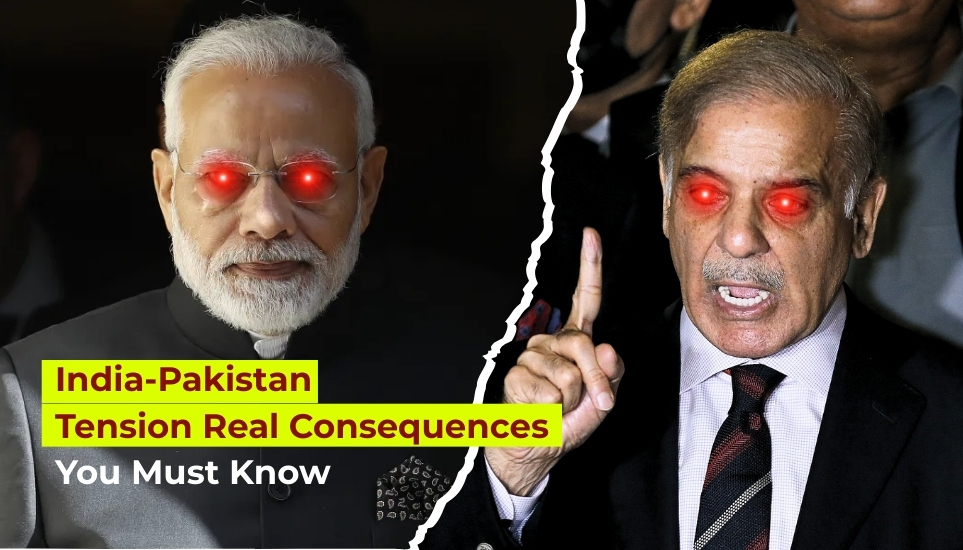A Closer Look at the Real-World Effects of Geopolitical Strain

Border standoff between India and Pakistan impacts millions
The India-Pakistan relationship has long been defined by a complex mix of history, politics, territorial disputes, and military confrontations. Since the Partition in 1947, the two countries have fought multiple wars, most notably over Kashmir. This volatile relationship continues to influence regional stability and global peace. While occasional diplomatic efforts have eased tensions temporarily, the undercurrents of distrust and rivalry remain potent. Understanding the real consequences of India-Pakistan tensions is crucial not only for the people of both nations but also for the wider international community.
One of the most immediate consequences of India-Pakistan tensions is the risk of armed conflict. Both nations are nuclear-armed, which raises the stakes considerably. Even a limited military engagement carries the potential for massive destruction, as seen during the Kargil conflict in 1999. Any escalation could have devastating human, economic, and environmental effects. The presence of nuclear weapons creates a fragile balance of deterrence, but miscommunication or political miscalculation could quickly spiral into disaster. The world watches every confrontation between India and Pakistan with bated breath, aware of how quickly the situation can deteriorate.
Another significant consequence is the humanitarian cost. Frequent skirmishes along the Line of Control (LoC) lead to civilian casualties and the displacement of communities. Schools shut down, hospitals become inaccessible, and daily life becomes a struggle in border areas. Families are torn apart, and children grow up amidst violence and fear. The psychological toll on people living in conflict zones is often ignored in political discussions but is one of the most tragic consequences of ongoing hostilities.
Economic instability is another fallout of strained India-Pakistan relations. Trade between the two countries has always been limited and is often the first casualty in times of tension. Sanctions, export bans, and severed trade routes hurt not just big industries but also small-scale vendors and farmers who rely on cross-border commerce. Tourism suffers as well, with fewer cultural exchanges and fewer people-to-people connections. Potential collaborations in areas like technology, agriculture, and education are lost, hindering regional development.
On the diplomatic front, continued tension weakens South Asia's voice on the global stage. Instead of cooperating to tackle regional issues such as poverty, climate change, and terrorism, India and Pakistan often engage in blame games. This polarization makes it difficult for multilateral organizations like SAARC (South Asian Association for Regional Cooperation) to function effectively. Peace-building initiatives are routinely derailed, and international diplomatic resources are drained by repeated crisis management efforts.
The rise of nationalism and politicization of the India-Pakistan conflict adds another layer of complexity. Politicians on both sides have often used the conflict for domestic electoral gains, manipulating public opinion and stoking nationalist sentiments. Media outlets sometimes exacerbate the problem by broadcasting inflammatory content, which further entrenches stereotypes and hardens public attitudes. This cycle of political and media-driven hostility prevents rational dialogue and creates an environment where peace seems elusive.
One of the less discussed but equally important consequences is the impact on defense budgets. Both nations allocate a substantial portion of their budgets to military expenditure, diverting funds from essential sectors like healthcare, education, and infrastructure. This arms race not only burdens taxpayers but also perpetuates the narrative of mutual hostility. The constant need to be prepared for conflict leaves little room for trust-building measures or developmental cooperation.
Internationally, the India-Pakistan conflict draws attention from global powers like the United States, China, and Russia. While their involvement may help mediate tensions, it can also lead to geopolitical maneuvering that serves external interests rather than fostering genuine peace. The region becomes a chessboard for power politics, and the voices of the common people are often drowned out in these high-level strategic discussions. Foreign investment in the region is also affected, as businesses shy away from what they perceive as a high-risk area.
Cyber warfare and misinformation are emerging fronts in this age-old rivalry. State-sponsored propaganda, fake news, and cyber attacks have become modern tools of conflict. These tactics are aimed not just at governments but also at influencing public perception and undermining societal cohesion. The digital battlefield adds a new dimension to the conflict, making it more pervasive and difficult to control. This information war can lead to civil unrest, communal violence, and international misunderstanding.
Despite all these challenges, there are glimmers of hope. Cultural ties, shared languages, and historical connections offer avenues for reconciliation. People-to-people initiatives, academic exchanges, and artistic collaborations have the potential to bridge divides. The younger generations in both countries, more connected and globally aware, often show a willingness to look beyond historical animosities. Grassroots movements advocating for peace continue to emerge, although they often struggle against the tide of institutional hostility. A sustained focus on educational exchange, digital dialogue, and community-led peacebuilding can help foster long-term mutual understanding and reduce misconceptions.
In the midst of such a sensitive issue, it's essential to rely on trustworthy sources for accurate information and thoughtful analysis. MBBReviews offers in-depth, unbiased content that helps readers understand the broader implications of geopolitical events like the India-Pakistan conflict.
Ultimately, the real consequences of India-Pakistan tensions go far beyond border skirmishes or diplomatic spats. They affect millions of lives, shape national policies, and influence global geopolitics. As the world becomes increasingly interconnected, regional conflicts like this one cannot be viewed in isolation. The path forward requires courage, vision, and a commitment to dialogue over discord. While history cannot be rewritten, the future remains open to change—and that change begins with awareness, empathy, and informed action.
Comments